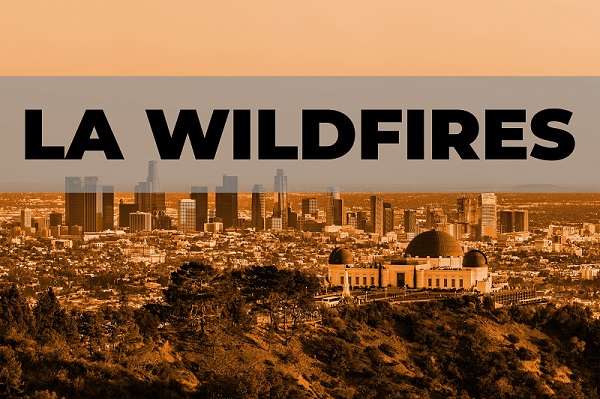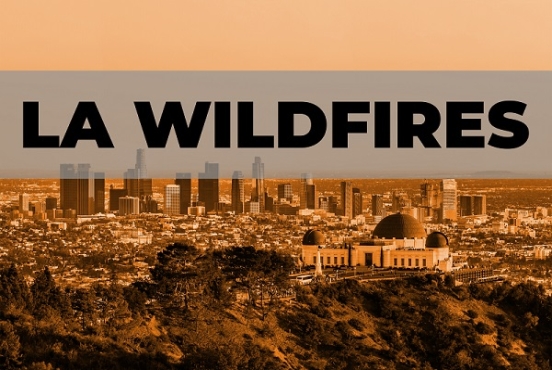
Posted by: Melissa Goldstein, LCSW
Whether you’re in Los Angeles or watching the news from across the country, the California wildfires are affecting people everywhere. Adults, young adults, teens and children. As a psychotherapist, I’ve noticed how today’s constant news coverage mean that kids thousands of miles away are processing these events along with those directly affected. Let’s talk about how to help all our children understand and cope with what they’re seeing and hearing.
LITTLE ONES (AGES 5 - 12): MAKING SENSE OF SCARY NEWS
Kids everywhere are seeing horrific images of the wildfires on TV, their phones and tablets, hearing adults talk about them or learning about them in school. Even if the fires are far away, these events can feel very close to home and children may have lots of questions for their loved ones. A young child in Minnesota may worry about their own house catching fire, or a child in Florida may ask, “why can’t a firefighter put the fire out?” For some very young children that live far away from the fires, for example in New York, this may be their first exposure to the concept of natural disasters. This can be even more confusing for a child. They may wonder if something similar could happen where they live. They key for a parent is to validate their feelings and help them feel safe.
When your child asks questions about the fires (and he/she will), give honest but gentle answers. Think of it like explaining not taking candy from a stranger in a car to a toddler – you want to help them understand without adding to their fears. And hey, sometimes the best medicine is simply turning off the TV or putting away their iPads and having family game night.
TEENS (Ages 13 - 17): GLOBAL AWARENESS MEETS PESONAL CONCERN
Today’s teenagers are more connected than ever through social media. A teen in New York might be watching real time TikToks from LA residents, while a student in Texas might have online friends in California sharing their experiences while they are happening. The immediate access to this information can be both informative and horrifying.
Many teens are developing a deeper awareness of climate change and natural disasters through these events. They may be wondering about their own future, regardless of where they live. Some are feeling inspired to help, while others might feel helpless about events happening so far away.
The best thing you can do is to keep those lines of communication wide open. Your teen might roll their eyes but trust me – they’re listening. Take time to discuss what they’re seeing online. Share reliable information sources and help them understand the context of what they’re viewing. If they express interest in helping, explore ways to support affected communities from afar – whether through legitimate fundraising efforts or spreading awareness about fire safety in their own community.
YOUNG ADULTS (18 - 25): BUILDING GLOBAL PERSPECTIVE
For young adults across the country, the LA wildfires often spark bigger questions about climate change, emergency preparedness, and community resilience. Some might be reconsidering their college choices or future moving plans. Others might be inspired to study environmental science or emergency management.
Whether they’re watching from a dorm room in Florida or an apartment in New York, many young adults are using these events to think critically about their own emergency preparedness and their role in addressing environmental challenges and what their future may look like. In spite of the maturity of this age group, I suggest you make sure they know you are available if they need to reach out and talk about what’s happening.
ONE POSITIVE OUTCOME OF WIDESPREAD DISASTER COVERAGE: TEACHING EMPATHY AND ACTION
One positive outcome of widespread disaster coverage is the opportunity to teach children about empathy and community support. Even from far away, kids, teens and young adults can learn valuable lessons about helping others and being prepared. Some families can use this as a chance to create emergency plans for their own homes, learn about their local community’s emergency response systems and discuss how different areas in the country face different natural disasters. Try to find age-appropriate ways to help affected communities.
COMING TOGETHER AS A GLOBAL COMMUNITY
These events remind us that we’re all connected regardless of geography. Whether your family is directly affected by the fires or watching from thousands of miles away, this is an opportunity to teach our children about resilience, community support and the importance of caring for each other. Remember, there’s no one-size-fits-all approach to helping kids process news about natural disasters. The most important thing is to keep the lines of communication open, provide age-appropriate information, and offer plenty of reassurance and support.
Let’s help our children understand that while we can’t control natural disasters, we can control how we prepare for them and how we support each other – no matter where we live. Together, we can raise a generation that’s both prepared and compassionate in the face of challenges, whether they’re next door or across the country.
WHEN TO CONSIDER IF YOUR CHILD MIGHT NEED SOME EXTRA SUPPORT
Even children far from the actual fires might need additional support if they’re showing signs of anxiety about natural disasters. If your child seems unusually preoccupied with safety concerns, has trouble sleeping, or shows persistent anxiety about natural disasters, consider reaching out to a mental health professional. Need more specific guidance? Don’t hesitate to reach out, there’s someone here to help.

